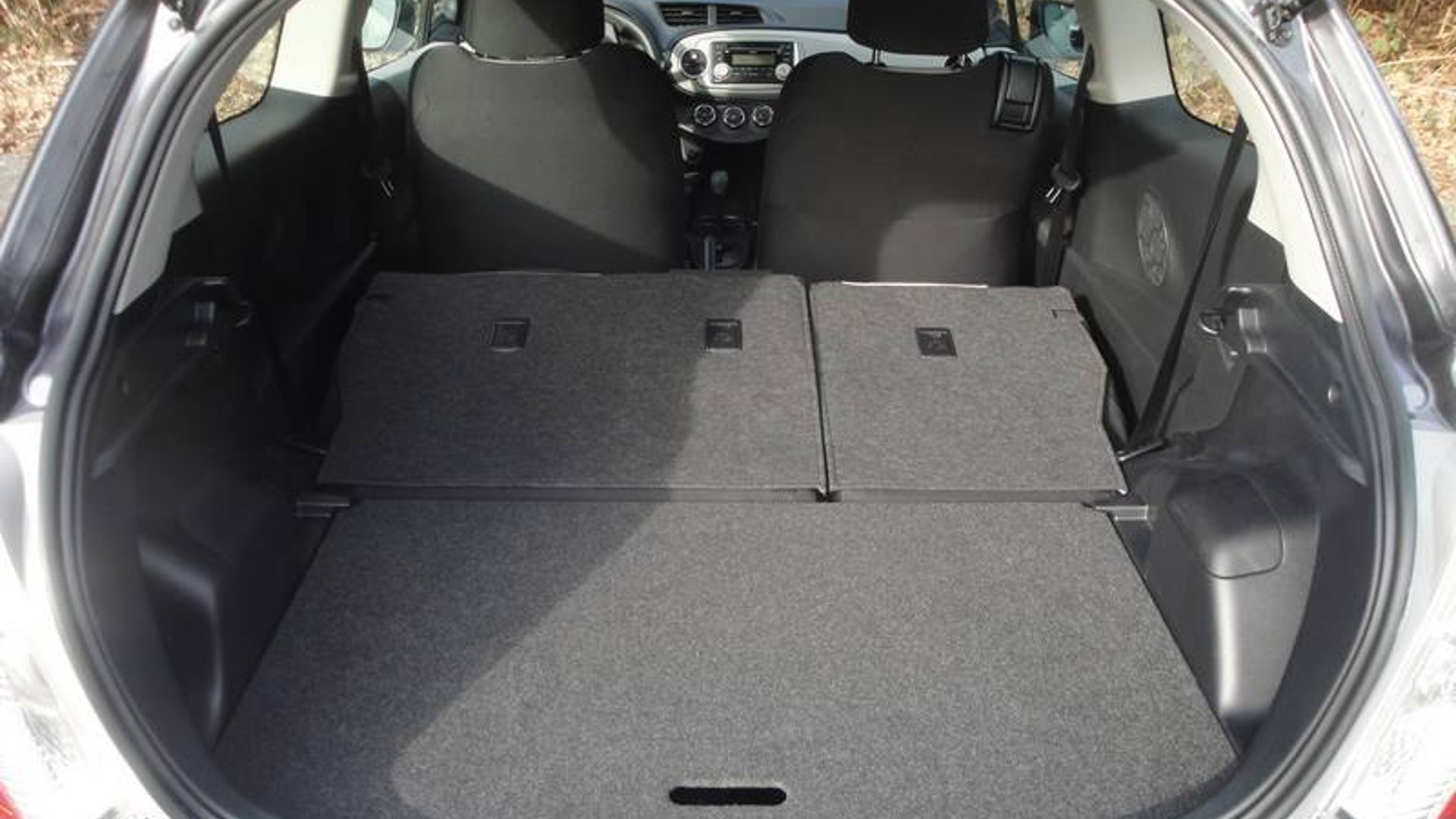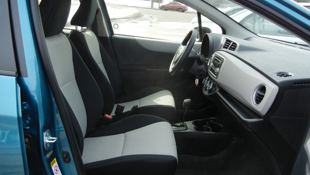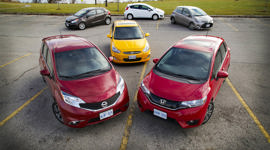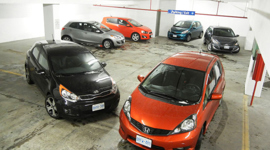Vehicle Type
The Yaris Hatchback is highly rated for maneuverability, brand reputation, fuel efficiency, and flexibility.
Subcompact hatchback
History/Description
When the current-generation Yaris Hatchback launched for model year 2012, it represented an updated, revamped and redesigned take on Toyota’s popular small car. With improved styling, more room, more features, and better fuel economy, the latest Yaris delivered more value, while continuing to stand out in the marketplace as a sensible buy that was big on reliability and long-term value.
Look for the Toyota Yaris Hatchback in three- and five-door variations, and with feature content including a cold weather package, folding seats, Bluetooth, iPod connectivity, steering-wheel-mounted audio controls, heated front seats, remote access, and more. If you’re after something sportier, the Yaris SE is worth a look, since it offered up a sport-tuned suspension, a quicker steering system, various visual upgrades, and bigger wheels.
Note that for 2015, numerous updates to the Yaris Hatchback saw the model offer an improved cabin, improved ride and handling, and improved looks and comfort. All Yaris Hatchback models came with a standard suite of safety features which comprise the Toyota STAR safety system, and newer used models have the Toyota Safety Sense system as standard too.
Note that though Yaris was offered in a sedan variant as well, the platform and powertrain are all unique to that body style, which follows a different generational timeline than the hatchback that is the focus of this article. The gist? The information presented below is not necessarily applicable to the Yaris Sedan in similar model years.
Engines
All Yaris Hatchback models shipped with a 1.5L 106 hp four-cylinder engine. Transmission choices were a five-speed manual or four-speed automatic, and all units were front-wheel drive.
What Owners Like
The Yaris Hatchback is highly rated for maneuverability, brand reputation, fuel efficiency, and flexibility. Many owners report that the cabin is larger than expected, given the overall size of the vehicle, and most enjoy ride quality on par with a larger car.
What Owners Dislike
Owners tend to wish for a more exciting interior design, and some report that the engine can feel underpowered and noisy. Though owner reports are inconclusive on the Yaris’s handling in winter, those using winter tires tend to report that the car feels safe and stable in slippery conditions.
Here’s a look at some Toyota Yaris owner reviews
The Test Drive
Yaris has a reputation as one of the most reliable and trouble-free small cars on the road, though a few checks and inspections are advised ahead of your purchase, for maximum success and long-term reliability.
First, remember that regardless of brand or reputation, even the most reliable vehicles on the road can be a nightmare waiting to happen if they’ve been poorly treated, neglected, or if former owners have failed to stay up on basic maintenance requirements. The way a vehicle was driven, used, and especially maintained, has a greater impact on its long-term durability and reliability than the badge on the hood. Like all vehicles, the Toyota Yaris Hatchback is a machine made of parts and components that require periodic attention and maintenance. Remember this as you shop for a used model.
Give your potential used Yaris candidate a careful walk-around before your test drive, inspecting all painted surfaces for signs of chipping, scratching, or rust. Though the durability of a vehicle’s finish is affected by many factors, some owners have reported that the Yaris’s bodywork and paint are less durable than expected, and easily damaged. Front-facing surfaces, including the hood edge and bumper, will tend to show the most wear. Check the lower, inner edges of the doors, hood, and tailgate, as well as the inner, lower portions of each wheel-well for signs of rust. If you note any excessive rust in these areas, call it into your pricing negotiations.
Inspect the area where the plastic bumpers attach to the metal body, particularly around the front fenders and rear quarter panels. If the gap between the bumper and either of these body areas is wider at one end than the other, the likely culprit is a failure of one or more of the clips used to secure the bumpers onto the body. Though losing a bumper is unlikely, failing body clips can cause an unsightly gap between the bumper and body. The fix is to have the clips replaced. Here’s some more information.
While driving, be sure to visit the roughest stretch of road available, and drive it, several times, at various speeds. Note that any popping, clunking, or crunching sounds from beneath the vehicle could indicate worn-out suspension components that will need some attention, especially if the noise is accompanied by a banging sensation felt through the vehicle’s floor. The longevity of a vehicle’s suspension components is subject to many factors, though healthy suspension parts don’t make excessive noises. If the Yaris Hatchback you’re considering does, be sure to have it inspected by a technician before you buy.
Here’s some more reading about a Yaris with a noisy ride, which was caused by a bad shock absorber in this case.
Park the vehicle with the engine running, and turn the wheel fully from one side to the other, several times. Any popping sounds, or a grinding sensation through the steering wheel, is likely a sign that one or both upper strut mount plates will need to be replaced.
Check the instrument cluster for warning lights. An Airbag light, or SRS light, indicates a problem with the airbag system, possibly caused by a faulty or disconnected wiring harness under a front seat, or a bad clock-spring in the steering wheel, which facilitates the airbag’s electrical connection. As this is a safety concern, shoppers are advised to have the vehicle repaired, if this problem is detected, as soon as possible.
Further, note that a Check Engine light may illuminate for a wide range of reasons, each of which can be easily uncovered with a quick diagnostic scan via a dealer, mechanic, or handheld diagnostic code reader. A Check Engine light is an invitation to have the vehicle scanned for a precise diagnosis, and indicates a problem with a powertrain or engine electrical component or sensor. If you see a Check Engine light, have the vehicle scanned to see why it’s illuminated. Do not unplug and reconnect the battery, or start replacing sensors at random, hoping to fix the issue.
Run the air conditioner, if equipped, for a few minutes during your test drive. If cold air fails to pump vigorously into the cabin, have the system inspected. Note that a clogged cabin air filter is a leading cause of poor A/C system performance, as well as a potential source of unpleasant odours when the system is engaged. Ask the seller if they’ve ever changed their cabin air filter. If they don’t know what a cabin air filter is, you’ll probably need to replace it.
Finally, if the Yaris Hatchback you’re considering has Bluetooth, confirm that its able to connect to whatever smartphone you’ll use. Some owners have reported compatibility issues between certain smartphones and certain head-units, though these issues seem most likely when drivers are using an older smartphone model.
The Verdict
By and large, owner-reported problems with this generation of Yaris Hatchback seem centred around small and easy-to-detect issues that should be relatively easy to remedy, if detected. With a thumbs-up after a pre-purchase inspection by the mechanic of your choice, a well-maintained used Yaris should prove a worry-free ride for years to come.
Crash Test Ratings
IIHS: Top Safety Pick (2013)
NHTSA: 4/5 Stars





























